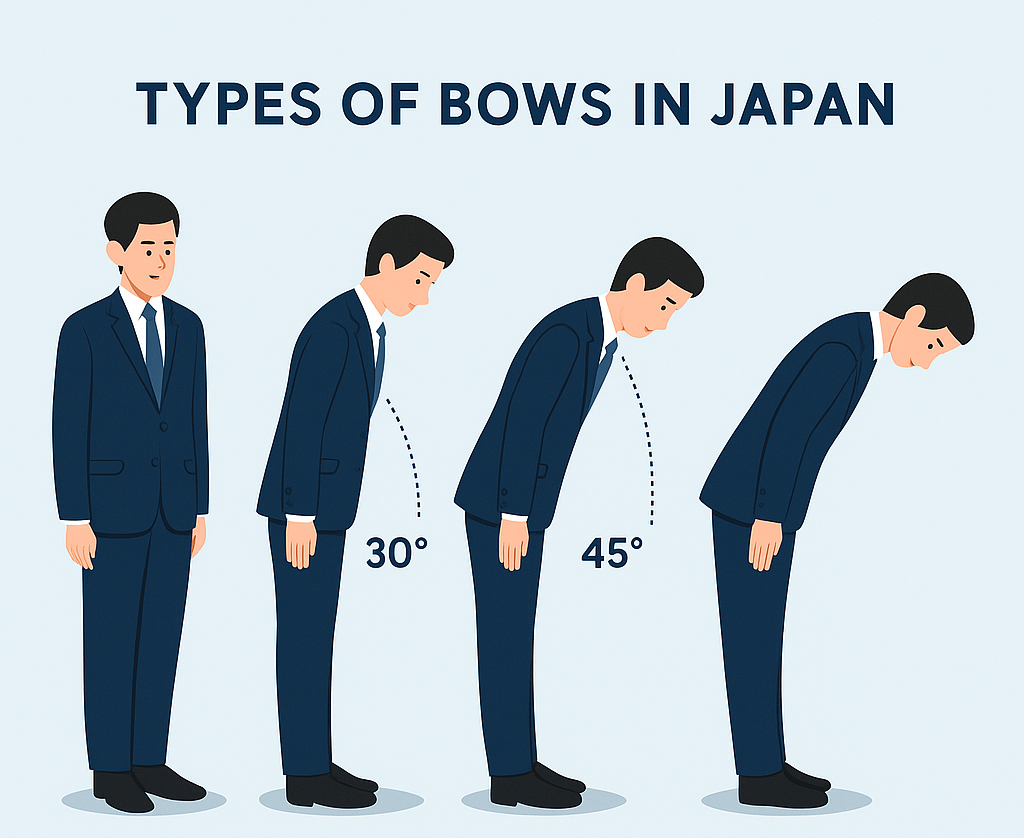
In Japan, bowing is everywhere. You’ll see it in the streets, shops, offices, train stations—even on the phone!
But what does it mean? And more importantly, when do Japanese people actually bow?
This guide will help you understand the common situations where bowing happens in Japan, so you can better appreciate the culture—even if you never bow yourself.
Bowing in Japan – A Quick Overview
Bowing (called “ojigi” in Japanese) is not religious or spiritual—it’s a cultural habit deeply rooted in respect, humility, and politeness.
Unlike a handshake or a hug, bowing is subtle and has many levels. The way and depth of the bow often reflects the relationship, the occasion, or the social hierarchy between people.
🕒 When Do Japanese People Bow?
Here are common situations where you’ll likely see bowing in everyday life:
🙋♂️ Greeting Someone
People bow when meeting someone for the first time, or even when saying a quick hello to a colleague or neighbor.
🙇♀️ Saying Thank You
At shops, restaurants, hotels, and even convenience stores, both staff and customers often bow slightly to say thank you.
🙇♂️ Apologizing
Bowing is essential in Japanese apologies. A deeper bow means a more sincere or serious apology—especially in public or business settings.
💼 Business Meetings
In formal business situations, people bow when entering and leaving meetings. Lower-ranking employees usually bow more deeply.
🚪 Saying Goodbye
Whether at home, a hotel, or at the office, you’ll often see bows used when parting ways.
🏯 Visiting Temples or Shrines
People often bow once or twice before and after praying at Shinto shrines or Buddhist temples.
📞 On the Phone
Yes, even though the other person can’t see, many Japanese people naturally bow while speaking politely on the phone!
🔍 Types of Bows You May See
| Type | Description | Situation |
|---|---|---|
| Quick nod | A casual, small bow | Everyday thanks, passing someone |
| 30° (keirei) | Polite bow | Business greetings, customers |
| 45° (saikeirei) | Deep bow | Formal apology, strong respect |
| Multiple bows | Repeated deep bows | Very formal apologies or rituals |
🙆♂️ What Should You Do as a Visitor?
Don’t worry—you don’t have to bow like a local. But here are some helpful tips:
- A small nod is perfectly fine if someone bows to you
- Just saying “arigatou gozaimasu” (thank you) with a smile is enough
- Don’t overthink it—Japanese people won’t expect perfection
Understanding when people bow in Japan gives you a glimpse into the country’s values: respect, harmony, and thoughtfulness. Even if you don’t bow yourself, noticing these gestures helps you connect more deeply with Japanese culture.
Watch, smile, and enjoy the quiet grace of everyday bows in Japan.